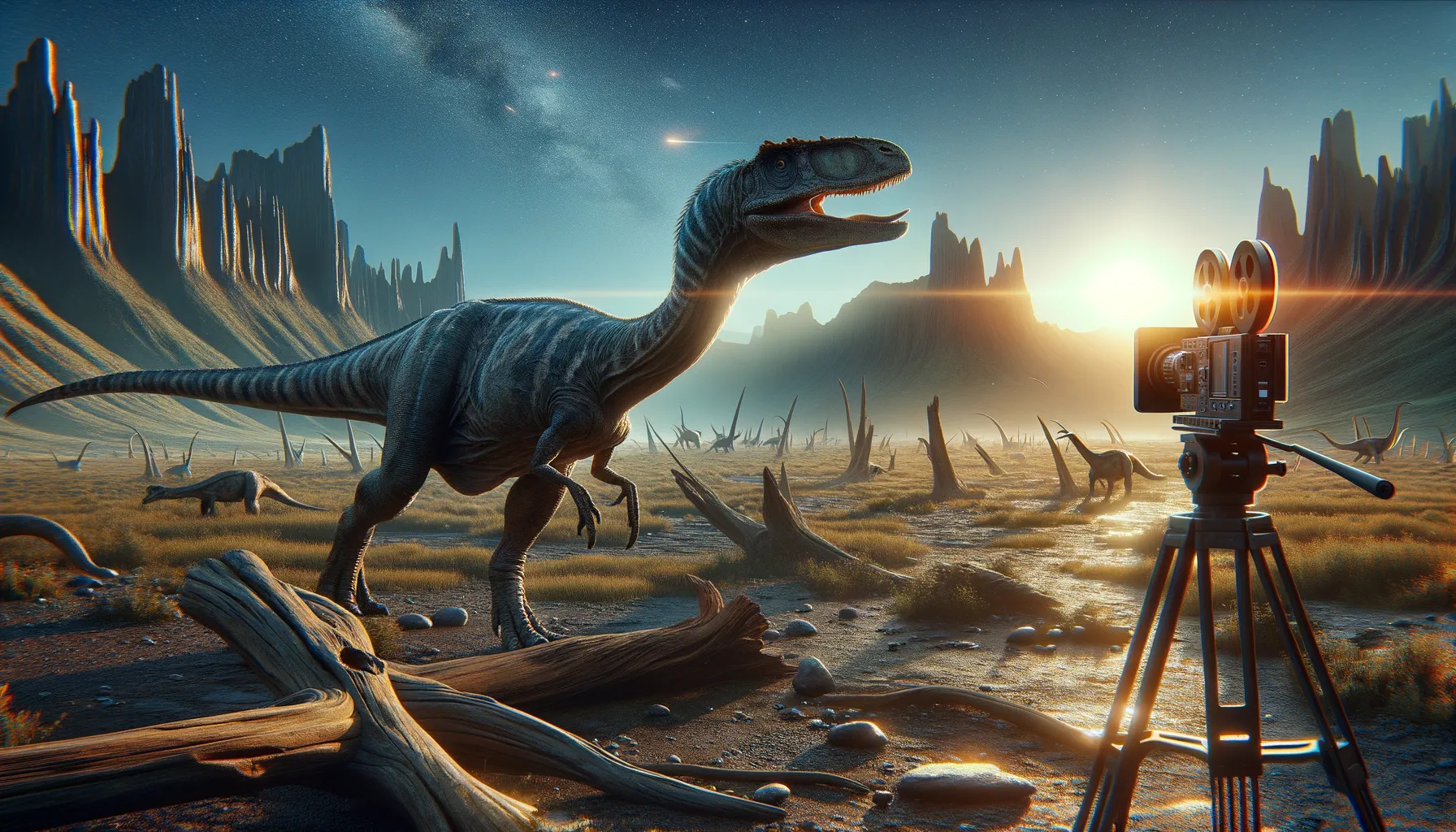
Alwalkeria
Agile hunter from the ancient past.
Period
Triassic
Length
Measured around 3 meters in length.
Height
Stood about 1 meter tall.
Weight
Estimated to weigh around 10-15 kg.
Alwalkeria is a fascinating early dinosaur from the Late Triassic period, known for its small, agile form. As a bipedal theropod, it likely moved quickly and efficiently on two legs, making it an adept hunter of small prey. Discovered in India, it provides crucial insights into the early evolution of dinosaurs, offering a glimpse into the physical characteristics and behaviors of these ancient creatures.
Diet
Alwalkeria was likely an omnivore, feeding on small animals and plant materials. Its teeth suggest it could have processed various types of food rather efficiently.
Hunting
It probably hunted small animals using its speed and agility to capture prey. Its bipedal locomotion would have facilitated quick, darting movements during hunts.
Environmental challenges
Living in the Late Triassic, Alwalkeria faced significant climatic changes, which included fluctuating temperatures and arid conditions. These environmental shifts required adaptability in both behavior and diet. Competition for resources with other early dinosaurs and prehistoric reptiles posed additional challenges. Its small size might have helped it evade larger predators, but also required constant vigilance.
Speed
Possibly fast due to its small size and agility.
Lifespan
Exact lifespan unknown; likely shorter.
First discovery
Discovered in India in 1981 by Sankar Chatterjee.
Fun Facts
- Alwalkeria is one of the earliest known dinosaurs, dating back to the Late Triassic period over 200 million years ago.
- This dinosaur was named in honor of the British paleontologist Alick Walker.
- Alwalkeria was a small dinosaur, estimated to be only about 1 meter long, making it roughly the size of a modern-day house cat.
- It is believed to have been a biped, walking on two legs, which helped it move quickly to catch prey or escape predators.
- Fossils of Alwalkeria have been found in India, giving scientists clues about the distribution of early dinosaurs.
- Alwalkeria likely had a varied diet, potentially including small animals and plants, which helped it adapt to its environment.
- This dinosaur provides important insights into the early evolution and diversification of dinosaurs.
Growth and Development
Alwalkeria's development would have involved rapid growth phases to reach reproductive maturity quickly. This is inferred from the small size of adult specimens, suggesting a fast life cycle. Bone growth patterns might indicate that it experienced seasonal changes in growth rates. Overall, its development was likely shaped by environmental pressures and resource availability.
Habitat
Alwalkeria inhabited the region that is now India, which, during the Triassic, was part of the supercontinent Gondwana. This environment was likely a mix of dry and occasionally humid climates with scattered forested areas. Rivers and small lakes, prevalent in the habitat, provided water sources and supported varied plant life. These landscapes also attracted numerous other species, contributing to a dynamic ecosystem.
Interaction with other species
Alwalkeria coexisted with early theropods, herbivorous dinosaurs, and other prehistoric reptiles. As a small predator, it may have occasionally scavenged remains left by larger carnivores. Avoidance or competition with larger dinosaurs for resources was likely part of its daily survival. Being an early dinosaur, its interactions contributed to the evolutionary landscape of the Late Triassic.
Natural lifespan
The natural lifespan was short, with estimates suggesting less than a decade.
Reproduction
Alwalkeria reproduced by laying eggs, as inferred from evidence of reproductive strategies in similar theropods. The nesting behaviors remain unconfirmed but could have involved simple nests or burrows. Incubation might have been influenced by environmental heat, suggesting seasonal reproduction. Egg size and embryo development patterns remain a topic of active research and are critical for understanding.
Social behaviour
Alwalkeria might have lived in loose-knit groups, which would have offered some protection from predators. Social structure is largely speculative but could have involved hierarchy based on size or age. Communication might have included vocalizations or visual signals, similar to other early theropods. Juveniles may have stayed with adults until reaching a certain level of maturity.
Fossil locations
Fossils of Alwalkeria have been predominantly found in the Maleri Formation of India. The site revealed a mix of other early dinosaur and prehistoric reptile fossils, indicating a rich ecosystem. Continued excavations in these regions help refine the understanding of its range. These fossil finds are essential for piecing together the evolutionary history of early dinosaurs.
